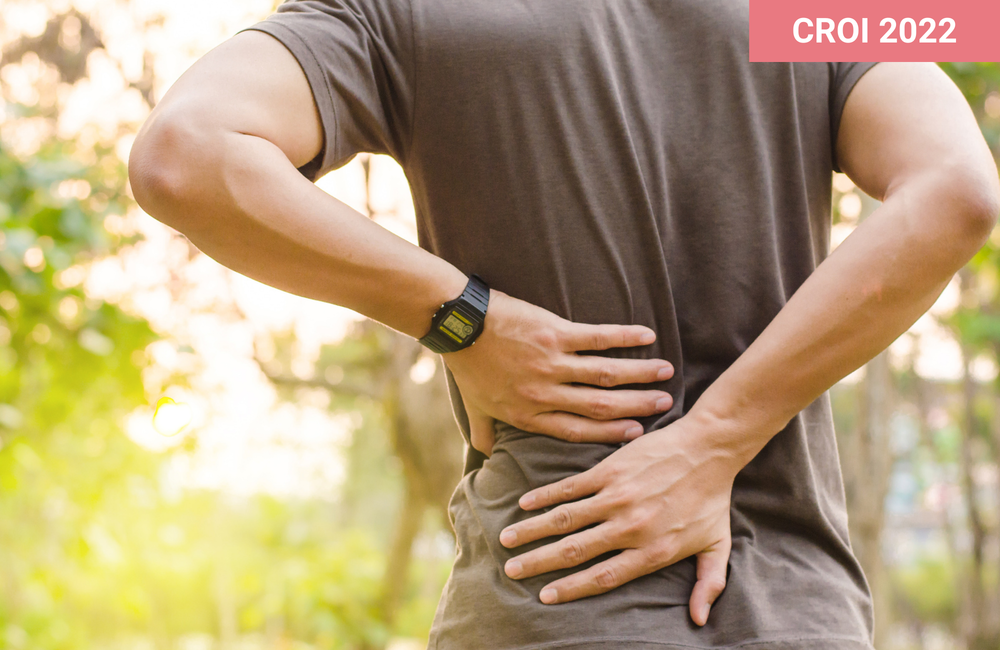
A small proportion of people experienced bone loss after starting daily tenofovir disoproxil fumarate/emtricitabine (TDF/FTC; Truvada or generic equivalents) for pre-exposure prophylaxis (PrEP), and those who were more adherent saw a greater effect, according research presented at the Conference on Retroviruses and Opportunistic Infections (CROI 2022).
It is well known that TDF is associated with bone loss in people using it as part of a combination regimen for HIV treatment, but there is less evidence on its effects in HIV-negative people taking it for prevention. Some prior studies showed people on PrEP experience modest bone loss (which may be a particular concern for young men), but this resolves after stopping TDF. The newer tenofovir alafenamide/emtricitabine (TAF/FTC; Descovy) is easier on the bones and kidneys but more associated with wight gain and elevated lipids; with no generic equivalent, it is also a costlier option.
Dr Joseph Chang of Kaiser Permanente Medical Center in Los Angeles and colleagues conducted a retrospective analysis to assess the association between FTC/TDF PrEP and bone loss.
The study included 7,698 adults in Southern California who used FTC/TDF for PrEP from 2012 to 2020. Nearly all were men, and about a third each were in the 18-29 and 30-39 age groups. About a third were White, 40% were Latino, 10% were Asian and 7% were Black. About 40% had good adherence, as indicated by a ‘proportion of days covered’ (PDC) by PrEP in the 90% to 100% range, while about 60% had suboptimal adherence below 90%.
The participants had no prior history of osteoporosis (substantial bone loss) or osteopenia (mild bone loss) as indicated by a T-score of -1 or less. However, they had all undergone DEXA bone scans at some point during the study. In response to a question, Chang said DEXA scans were not part of routine PrEP monitoring and the researchers did not look at the reasons why people had the scans, leaving open the possibility that this group may have been at higher risks for bone problems than the overall population using PrEP.
Over an average follow-up period of 502 days, 217 participants (3%) developed osteopenia or osteoporosis. The researchers noted that this is similar to the rate among HIV-positive people using TDF/FTC for treatment.
An initial analysis found that people with hepatitis B, cardiovascular disease, chronic kidney disease, impaired kidney function or hypertension were more likely to experience bone loss, but these factors were not statistically significant in an adjusted multivariable analysis.
Only people with better adherence to PrEP remained at greater risk for bone loss in the fully adjusted analysis. People in the 90% to 100% PDC category were significantly more likely to be diagnosed with osteopenia or osteoporosis compared to those with lower PDC adherence levels. In fact, more than 90% of those with osteopenia or osteoporosis were in the 90%-100% PDC category compared with 9% in the <90% adherence category. Obesity and younger age were associated with a lower risk of osteopenia or osteoporosis.
Reassuringly, no new cases of HIV were detected during the study period, even among participants with less than 90% adherence.
Based on these findings, the researchers suggested that counseling on the incidence of osteoporosis and osteopenia as well as routine screening should be considered for people starting daily TDF/FTC for PrEP. “Annual to every other year DEXA may be advisable,” Chang said.
Because the amount of time spent on TDF/FTC was the strongest risk factor for bone loss, they also suggested that future studies should explore whether on-demand or event-drive PrEP – in which the TDF/FTC pills are taken before and after sex rather than daily – might mitigate the risk of serious adverse effects.
Chang JC et al. A retrospective analysis of bone loss in emtricitabine/tenofovir therapy for HIV PrEP. Conference on Retroviruses and Opportunistic Infections, abstract 840, 2022.
View the abstract on the conference website.
Update: Following the conference presentation, this research was published in a peer-reviewed journal:
Chang JC et al. A retrospective analysis of bone loss in tenofovir-emtricitabine therapy for HIV PrEP. International Journal of STD & AIDS, 33: 1183-1192, October 2022.
